Abstract
A preparation of the putative antibody in HN (Heymann's nephritis) lacking preformed immune complexes, obtained from the acid eluates of kidneys with HN, purified through ion exchange and gel-filtration chromatography, characterized by immunoelectrophoresis, sucrose density-gradient ultracentrifugation, 125I-Clq assay for immune complexes, and specific for the brush border of rat proximal renal tubule was injected intravenously, intra-arterially directly into the left and renal artery of a kidney with intact normal circulation, and into the isolated buffer-perfused kidney, respectively, in three groups of rats. Controls were injected with non-antibody IgG, and antibody absorbed with the specific antigen. Localization of antibody was studied by direct immunofluorescence. Prompt localization of antibody and formation of in situ immune complexes occurred in the isolated perfused kidney. No localization of antibody was seen following the intrarenal arterial injection in the unperfused kidney with intact circulation, and a delay of 5 days was noted for the localization to develop upon intravenous injection. These results show that, in the homologous antibody-induced HN, the preparation of isolated perfused kidney considerably enhances the formation of in situ immune complexes in glomeruli as compared to the unperfused kidney with intact circulation in which the antibody is injected either directly into the renal artery or systemically through a peripheral vein.
Full text
PDF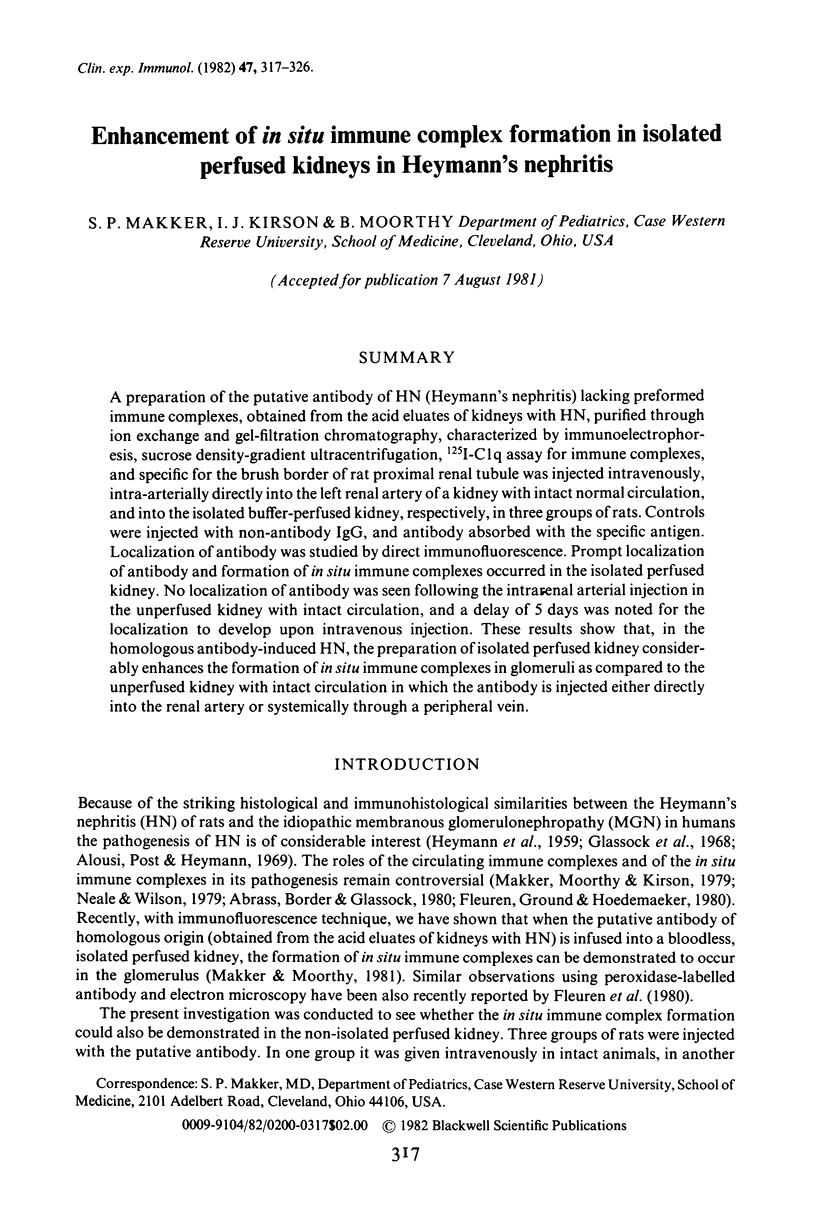

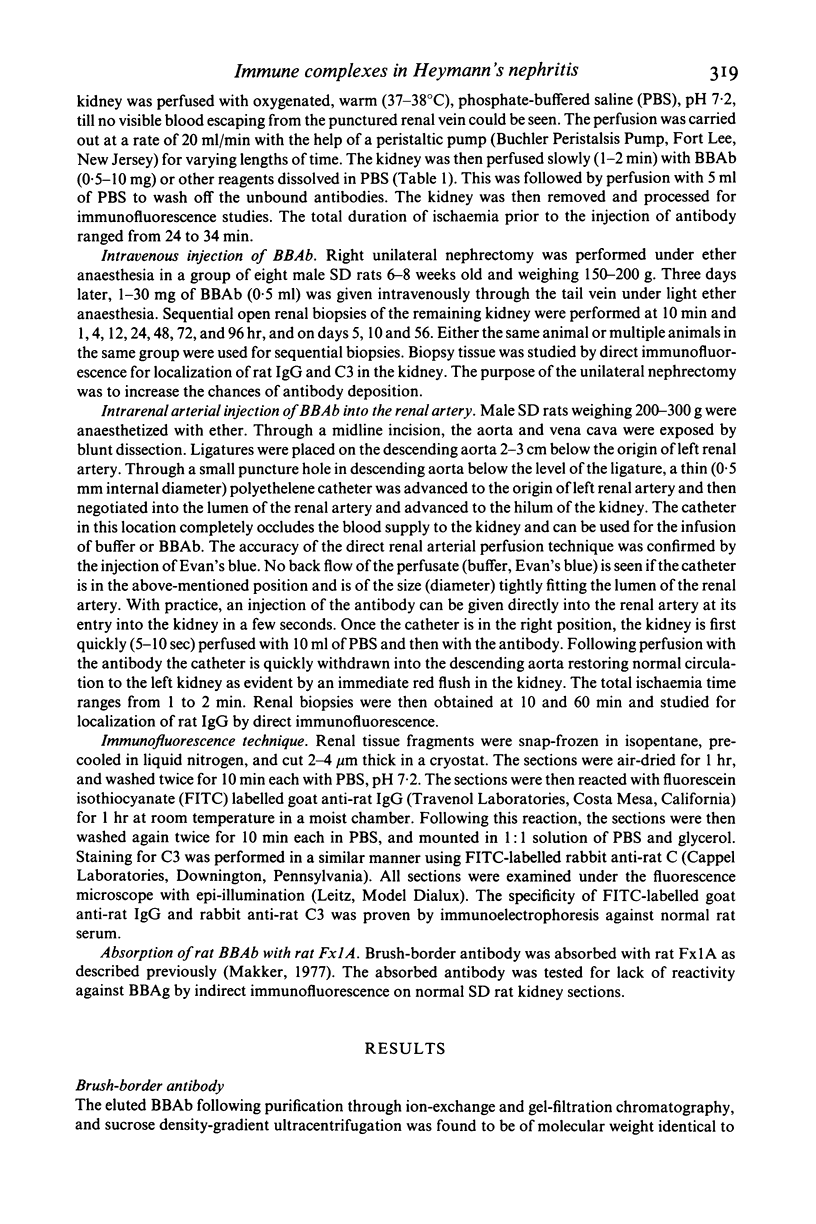
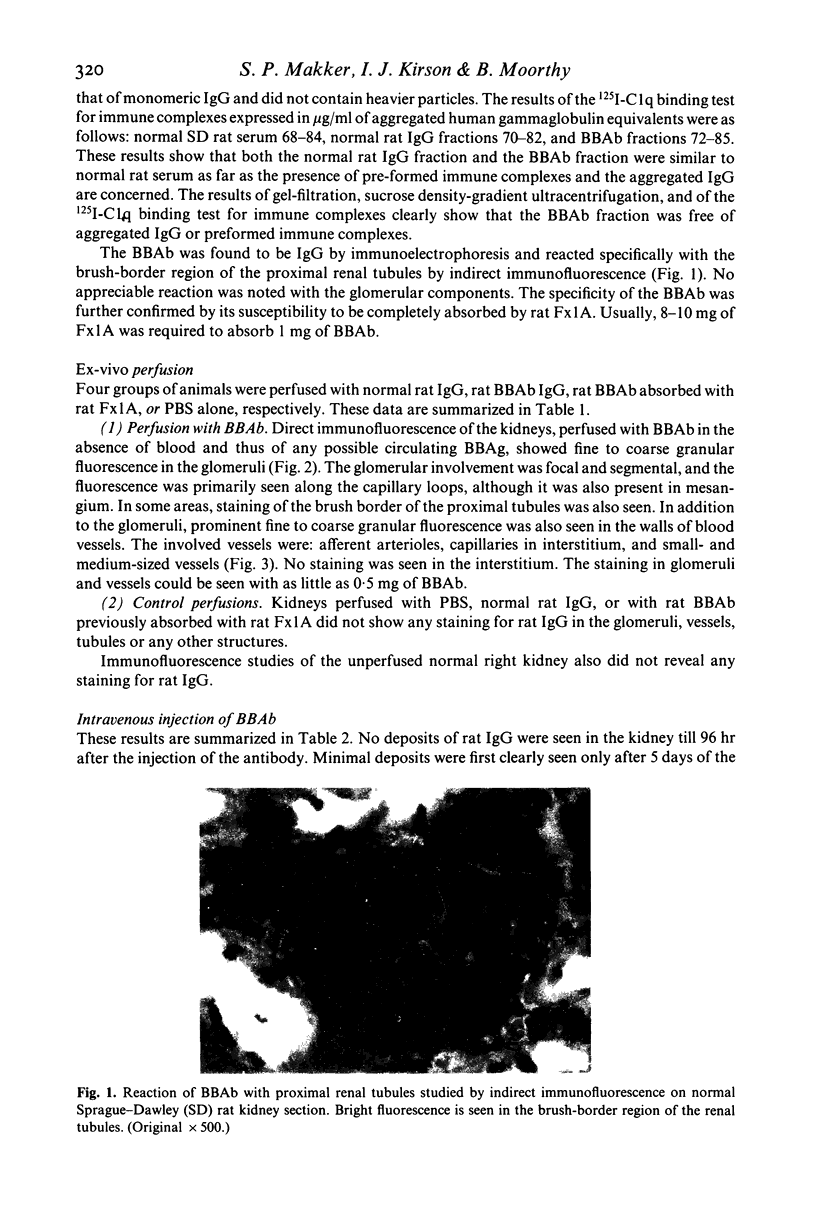
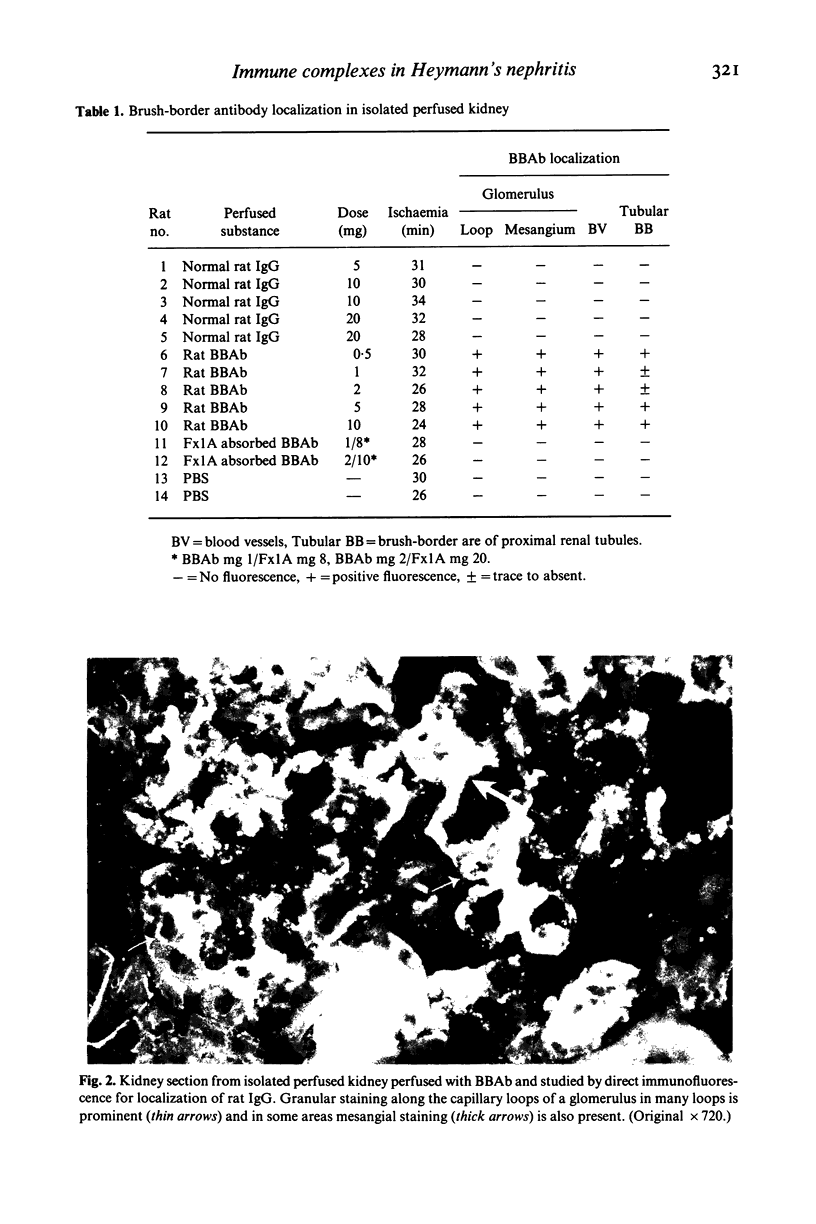
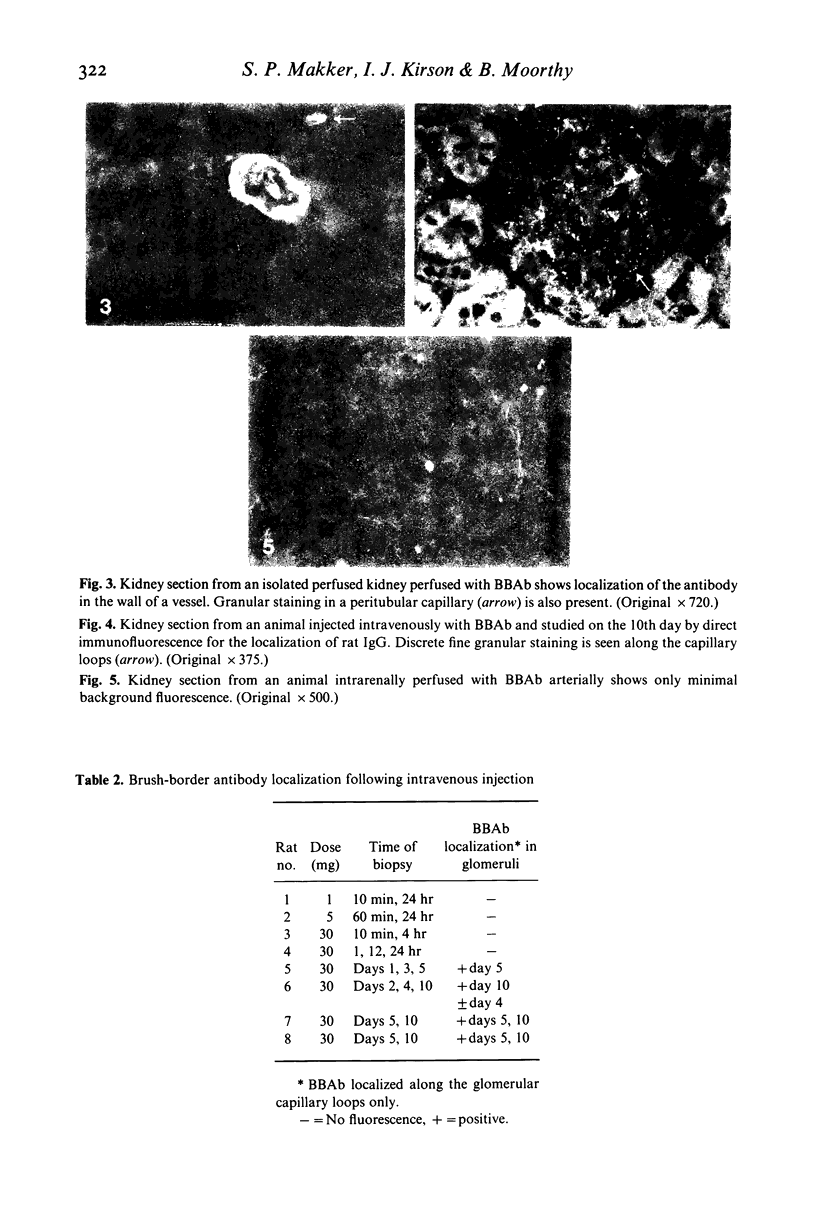
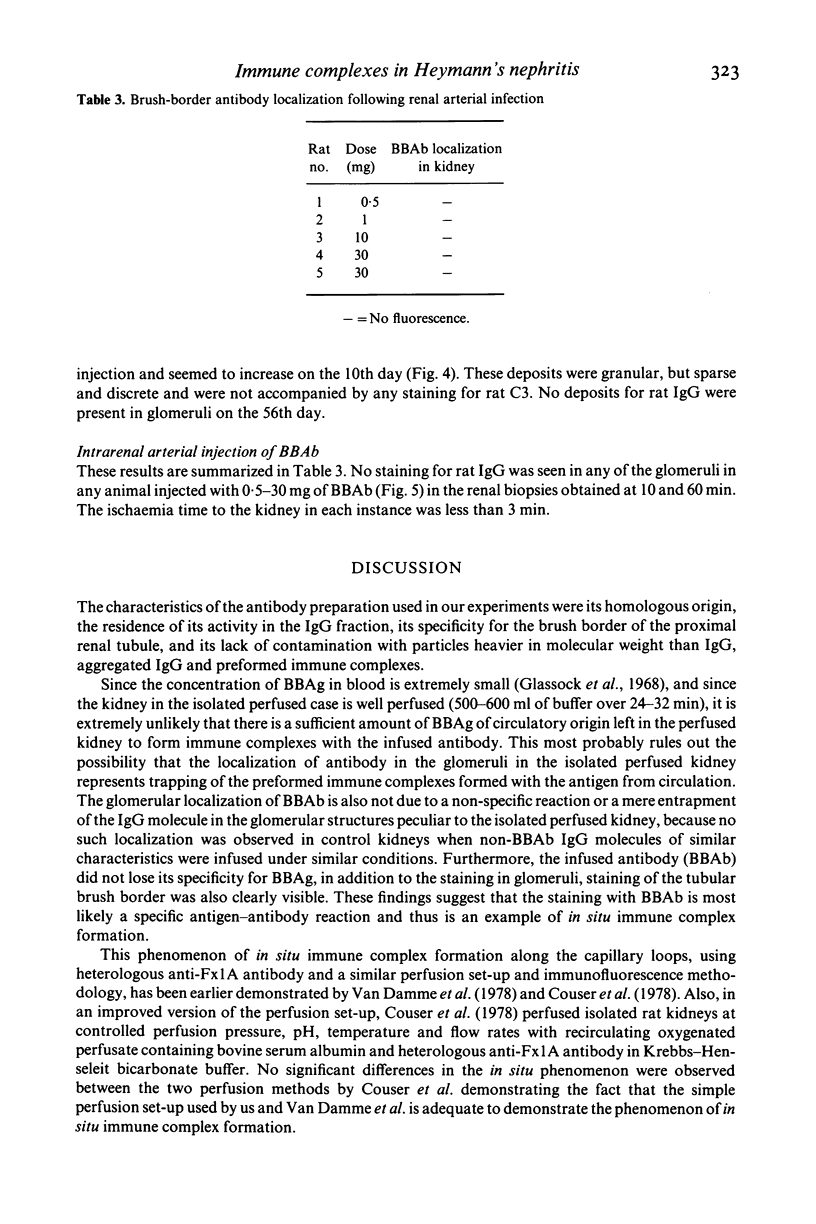
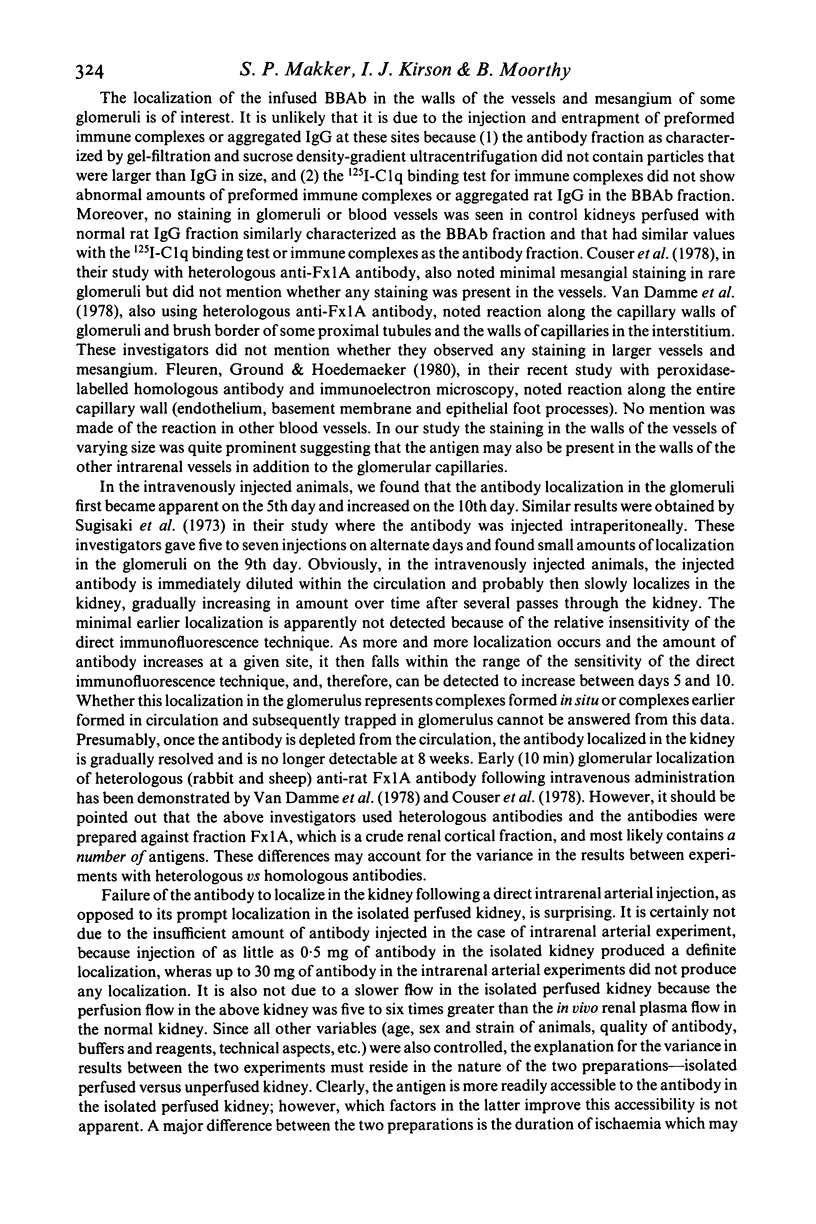
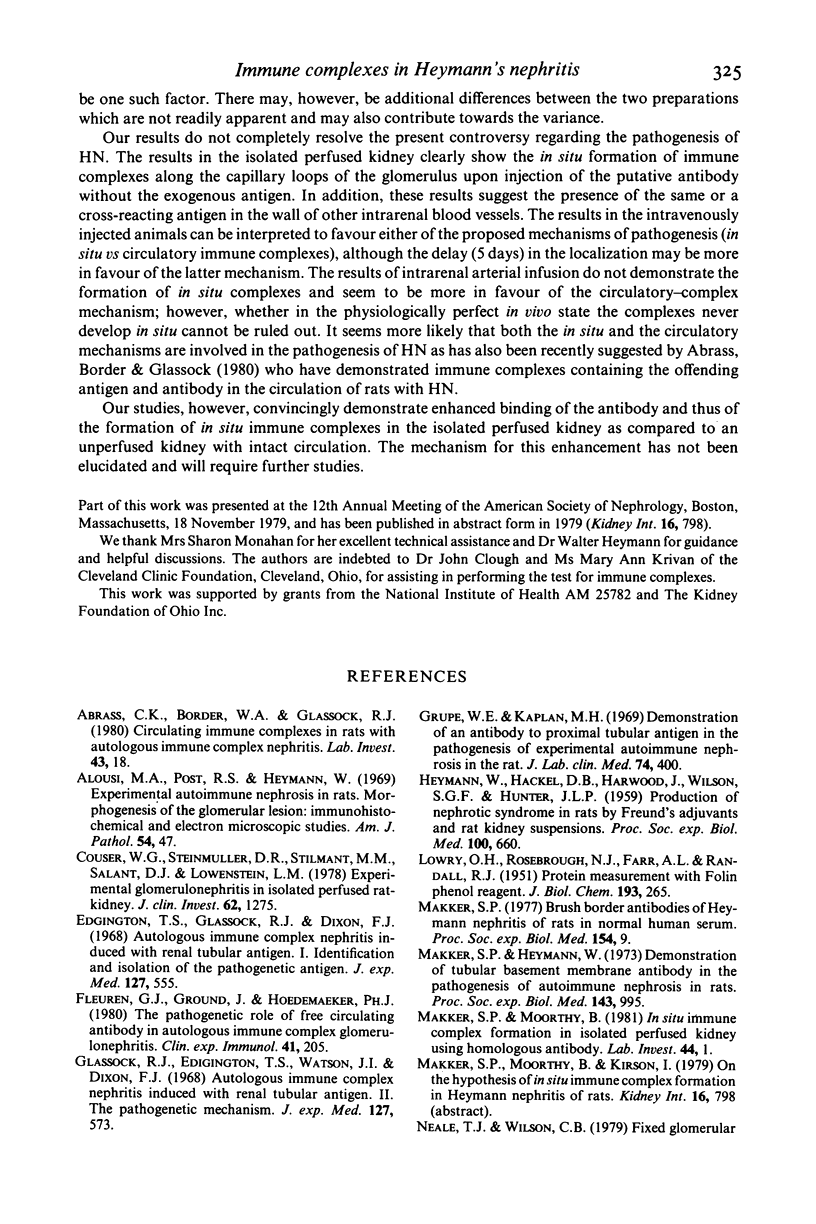

Selected References
These references are in PubMed. This may not be the complete list of references from this article.
- Abrass C. K., Border W. A., Glassock R. J. Circulating immune complexes in rats with autologous immune complex nephritis. Lab Invest. 1980 Jul;43(1):18–27. [PubMed] [Google Scholar]
- Alousi M. A., Post R. S., Heymann W. Experimental autoimmune nephrosis in rats. Morphogenesis of the glomerular lesion: immunohistochemical and electron microscopic studies. Am J Pathol. 1969 Jan;54(1):47–71. [PMC free article] [PubMed] [Google Scholar]
- Couser W. G., Steinmuller D. R., Stilmant M. M., Salant D. J., Lowenstein L. M. Experimental glomerulonephritis in the isolated perfused rat kidney. J Clin Invest. 1978 Dec;62(6):1275–1287. doi: 10.1172/JCI109248. [DOI] [PMC free article] [PubMed] [Google Scholar]
- Edgington T. S., Glassock R. J., Dixon F. J. Autologous immune complex nephritis induced with renal tubular antigen. I. Identification and isolation of the pathogenetic antigen. J Exp Med. 1968 Mar 1;127(3):555–572. doi: 10.1084/jem.127.3.555. [DOI] [PMC free article] [PubMed] [Google Scholar]
- Fleuren G. J., Grond J., Hoedemaeker P. J. The pathogenetic role of free-circulating antibody in autologous immune complex glomerulonephritis. Clin Exp Immunol. 1980 Aug;41(2):205–217. [PMC free article] [PubMed] [Google Scholar]
- Glassock R. J., Edgington T. S., Watson J. I., Dixon F. J. Autologous immune complex nephritis induced with renal tubular antigen. II. The pathogenetic mechanism. J Exp Med. 1968 Mar 1;127(3):573–588. doi: 10.1084/jem.127.3.573. [DOI] [PMC free article] [PubMed] [Google Scholar]
- Grupe W. E., Kaplan M. H. Demonstration of an antibody to proximal tubular antigen in the pathogenesis of experimental autoimmune nephrosis in rats. J Lab Clin Med. 1969 Sep;74(3):400–409. [PubMed] [Google Scholar]
- HEYMANN W., HACKEL D. B., HARWOOD S., WILSON S. G., HUNTER J. L. Production of nephrotic syndrome in rats by Freund's adjuvants and rat kidney suspensions. Proc Soc Exp Biol Med. 1959 Apr;100(4):660–664. doi: 10.3181/00379727-100-24736. [DOI] [PubMed] [Google Scholar]
- LOWRY O. H., ROSEBROUGH N. J., FARR A. L., RANDALL R. J. Protein measurement with the Folin phenol reagent. J Biol Chem. 1951 Nov;193(1):265–275. [PubMed] [Google Scholar]
- Makker S. P. Brush border antibodies of Heymann nephritis of rats in normal human serum. Proc Soc Exp Biol Med. 1977 Jan;154(1):9–13. doi: 10.3181/00379727-154-39591. [DOI] [PubMed] [Google Scholar]
- Makker S. P., Heymann W. Demonstration of a tubular basement membrane antibody in the pathogenesis of autoimmune nephrosis in rats. Proc Soc Exp Biol Med. 1973 Sep;143(4):995–999. doi: 10.3181/00379727-143-37455. [DOI] [PubMed] [Google Scholar]
- Makker S. P., Moorthy B. In situ immune complex formation in isolated perfused kidney using homologous antibody. Lab Invest. 1981 Jan;44(1):1–5. [PubMed] [Google Scholar]
- Sugisaki T., Klassen J., Andres G. A., Milgrom F., McCluskey R. T. Passive transfer of Heymann nephritis with serum. Kidney Int. 1973 Feb;3(2):66–73. doi: 10.1038/ki.1973.13. [DOI] [PubMed] [Google Scholar]
- Van Damme B. J., Fleuren G. J., Bakker W. W., Vernier R. L., Hoedemaeker P. J. Experimental glomerulonephritis in the rat induced by antibodies directed against tubular antigens. V. Fixed glomerular antigens in the pathogenesis of heterologous immune complex glomerulonephritis. Lab Invest. 1978 Apr;38(4):502–510. [PubMed] [Google Scholar]
- Zubler R. H., Lange G., Lambert P. H., Miescher P. A. Detection of immune complexes in unheated sera by modified 125I-Clq binding test. Effect of heating on the binding of Clq by immune complexes and application of the test to systemic lupus erythematosus. J Immunol. 1976 Jan;116(1):232–235. [PubMed] [Google Scholar]


